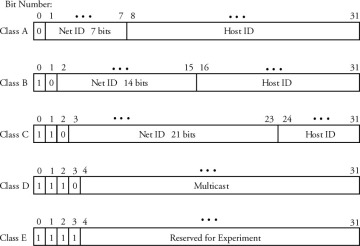IP addressing scheme, jise Internet Protocol addressing scheme bhi kaha jata hai, ek hierarchal addressing system hai jo devices ko network mein uniquely identify karne ke liye istemal hota hai. IP addressing scheme IP version 4 (IPv4) aur IP version 6 (IPv6) mein available hai.
और Layers के बारे मे भी जानें :-
- IPv4 Addressing Scheme:
- IPv4 addresses 32-bit binary numbers hote hain, lekin commonly decimal numbers mein dot-separated format (dotted decimal notation) mein represent kiya jata hai. For example, 192.168.0.1.
- IPv4 addresses ke 4 sections (octets) hote hain, jinhe dot se separate kiya jata hai. Har octet 0 se 255 tak ke decimal numbers ke range mein hota hai.
- IPv4 address space limited hai, aur total 4.3 billion unique addresses provide karta hai.
- IPv4 addresses do types ke hote hain: public addresses aur private addresses. Public addresses internet par unique hote hain, jabki private addresses local area networks (LANs) mein use hote hain.
- IPv6 Addressing Scheme:
- IPv6 addresses 128-bit binary numbers hote hain, aur hexadecimal format mein represent kiya jata hai. For example, 2001:0db8:85a3:0000:0000:8a2e:0370:7334.
- IPv6 addresses longer aur unique hote hain, jisse globally scalable addressing space provide ki jati hai.
- IPv6 addresses ke sections (hextets) colons se separate kiye jate hain. Leading zeros ko omit karne aur consecutive sections mein 0s ko represent karne ke liye “::” notation ka istemal hota hai.
- IPv6 addressing scheme mein additional features, jaise auto-configuration aur built-in security, available hote hain.
IP addressing scheme mein, IP address ka do hisse hote hain: network portion aur host portion. Network portion network identifier hota hai, jo network ko identify karta hai, jabki host portion specific device (host) ko identify karta hai. IP address ke specific parts ko determine karne ke liye subnet mask ka istemal hota hai.
IP addressing scheme IP packet routing aur delivery ko possible banata hai, aur devices ko internet ya local network mein uniquely identify karne ke liye istemal hota hai. IP addressing scheme ke sahi configuration aur allocation ke through, devices ko seamless network communication aur resource access ka experience milta hai.

Advantage of IP addressing scheme in computer network in hindi
IP addressing scheme ke kuch faide (benefits) hain:
- Uniquely Identifying Devices: IP addressing scheme devices ko network mein uniquely identify karne ka mechanism provide karta hai. Har device ko ek unique IP address assign kiya jata hai, jisse us device ko network par identify kiya ja sakta hai. Yeh identification network communication aur resource sharing ke liye zaroori hai.
- Global Connectivity: IP addressing scheme global connectivity ko enable karta hai. Internet par har device ko unique public IP address assign kiya jata hai, jisse un devices ko worldwide communication ka access milta hai. IP addressing scheme ke through devices internet par interconnected ho sakte hain.
- Scalability: IP addressing scheme, particularly IPv6, scalability ko support karta hai. IPv6 addressing scheme mein bahut saare unique addresses available hote hain, jisse future growth ke liye sufficient address space provide ki jati hai. Isse internet aur network infrastructure ko expand karne mein madad milti hai.
- Hierarchical Addressing: IP addressing scheme hierarchal addressing system ka use karta hai. IP addresses ke network portion aur host portion hone se, routing aur addressing process efficient ho jati hai. Hierarchal addressing network traffic ko organize karta hai aur network infrastructure ke management ko aasan banata hai.
- Network Communication: IP addressing scheme devices ke beech network communication ko possible banata hai. IP addresses ke through devices ek dusre se data exchange kar sakte hain, network resources access kar sakte hain, aur network services ka istemal kar sakte hain. IP addressing scheme ke sahi configuration ke bina network communication feasible nahi hoti hai.
- Address Allocation: IP addressing scheme address allocation ko standardize karta hai. Organizations, internet service providers (ISPs), aur network administrators IP addresses ko allocate karte hain, jisse devices ko network connectivity milti hai. Address allocation process IP addressing scheme ke guidelines aur best practices ke accordance mein hota hai.
- Interoperability: IP addressing scheme interoperability ko facilitate karta hai. IP-based protocols aur devices ke through devices alag-alag platforms aur operating systems par bhi seamlessly communicate kar sakte hain. IP addressing scheme ke use se devices ko cross-platform compatibility aur connectivity milta hai.
Overall, IP addressing scheme network communication, global connectivity, scalability, aur interoperability ke liye important hai. Is scheme ke faide devices aur networks ko robust aur efficient banate hain.


1 thought on “IP addressing scheme in computer network in hindi”